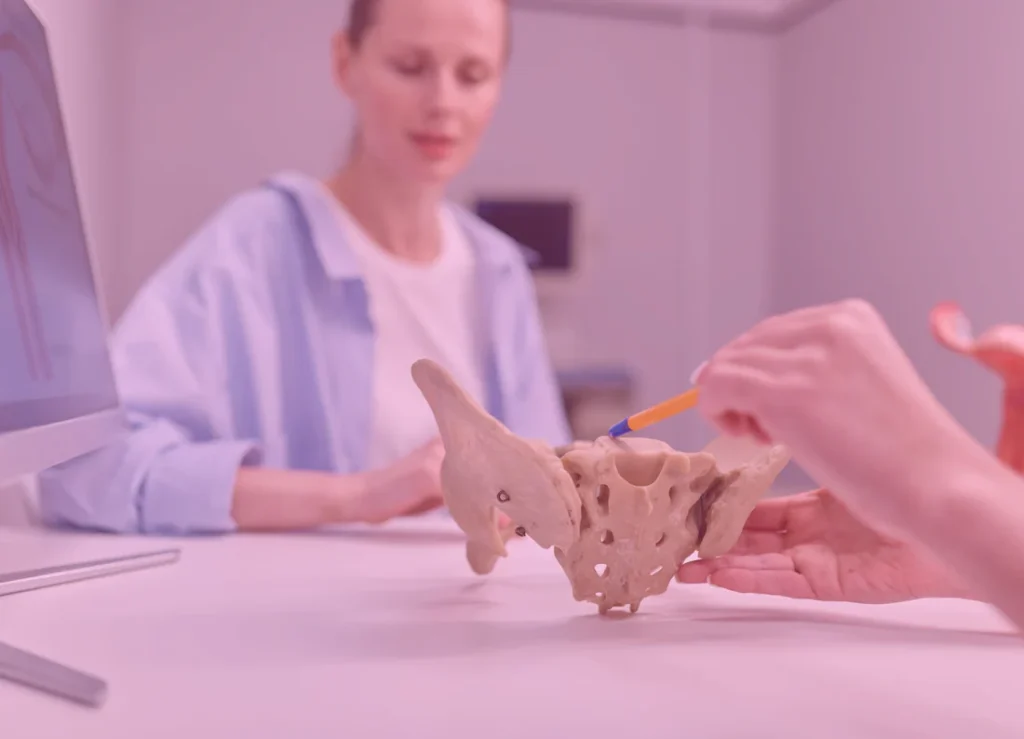Understanding Vaginismus
Vaginismus is a condition characterized by involuntary tightening of the vaginal muscles, which can make penetration painful, difficult, or even impossible. Many women experience discomfort during sexual activity, tampon insertion, or pelvic exams due to this condition. Beyond the physical challenges, vaginismus can also impact emotional well-being, causing stress, anxiety, or feelings of inadequacy. It is important to note that vaginismus is not uncommon and can affect women of all ages and backgrounds. Misunderstandings about this condition can lead to shame, but seeking help is crucial for both sexual health and overall quality of life. Unlike other pelvic floor disorders, vaginismus is primarily characterized by muscle spasms triggered by physical or psychological factors. Early recognition of symptoms can significantly improve the effectiveness of treatment.
Causes and Risk Factors
Vaginismus may arise from a combination of physical, psychological, and emotional factors. Physical causes can include previous injuries, infections, hormonal changes, or childbirth-related trauma. Psychological factors often play a significant role, including anxiety, past sexual trauma, or stress within a relationship. Certain medical conditions, such as endometriosis or urinary tract infections, may exacerbate symptoms. Age and hormonal fluctuations can also contribute to muscle tightness or sensitivity in the vaginal area. Understanding individual risk factors is essential to creating a tailored treatment plan. Each case is unique, and addressing both physical and emotional contributors increases the likelihood of successful treatment.
Diagnosis of Vaginismus
Proper diagnosis is critical for effective vaginismus treatment. Healthcare professionals typically begin with a detailed medical history and a discussion of symptoms to identify potential causes. Pelvic exams may be performed to observe muscle tension and check for underlying medical conditions. Questionnaires and self-assessment tools can help quantify the severity and frequency of symptoms. Open communication between the patient and provider ensures that psychological contributors, such as anxiety or fear, are also considered. A thorough evaluation allows doctors or therapists to recommend the most appropriate treatment approach. Misdiagnosis can delay recovery, so seeking care from professionals experienced in sexual health is highly recommended.
Comprehensive Treatment Approaches
Treatment for vaginismus involves a combination of physical, psychological, and medical strategies. Pelvic floor physical therapy is often the first step, focusing on exercises that relax the vaginal muscles and improve control. Vaginal dilators are commonly used to gradually increase comfort with penetration in a structured manner. Counseling and psychotherapy play an equally important role, addressing anxiety, past trauma, or relationship challenges that may contribute to muscle tension. In some cases, medical interventions such as topical anesthetics or muscle-relaxing medications can complement therapy. Severe cases may involve specialized treatments, including Botox injections to relieve muscle spasms. Lifestyle adjustments, such as stress reduction techniques, meditation, and open communication with a partner, are integral to successful recovery. Combining these approaches creates a comprehensive treatment plan that addresses the condition holistically.
At-Home Exercises and Techniques
Consistent at-home exercises can significantly enhance the results of professional therapy. Pelvic floor exercises, such as Kegels performed in a controlled and mindful manner, strengthen and relax muscles simultaneously. Vaginal dilator therapy allows women to progress gradually, starting with smaller sizes and increasing comfort over time. Mind-body practices, including yoga, meditation, and deep breathing exercises, reduce tension and improve overall relaxation. Tracking progress in a journal or using an app can help maintain motivation and identify triggers that exacerbate symptoms. Creating a comfortable and private space for exercises encourages consistent practice. Regularly incorporating these techniques into daily life can reduce anxiety and accelerate improvement.
Partner Involvement and Support
A supportive partner can play a crucial role in the effectiveness of vaginismus treatment. Open and empathetic communication helps reduce pressure and fear surrounding sexual activity. Couples can practice exercises together or engage in non-penetrative intimacy to build trust and comfort. Understanding the condition and its impact allows partners to respond with patience rather than frustration. Encouraging emotional support alongside physical strategies can create a more relaxed and positive environment. Celebrating small milestones, such as reduced discomfort or increased relaxation, strengthens both the treatment process and the relationship. Collaborative efforts foster a sense of partnership, making the journey toward recovery less isolating.
Overcoming Common Challenges in Treatment
Treatment for vaginismus may involve challenges, but persistence and patience are essential. Progress may feel slow at times, and setbacks are a normal part of the healing process. Anxiety and fear of pain can temporarily hinder improvement, requiring ongoing reassurance and coping strategies. Emotional responses, such as embarrassment or frustration, may arise but should not deter continued efforts. Adjusting treatment plans to fit individual needs ensures that progress remains achievable. Consistent practice, coupled with professional guidance, helps address these obstacles effectively. Maintaining a positive mindset and celebrating incremental improvements can transform challenges into opportunities for growth.
Frequently Asked Questions (FAQ)
What is the success rate of vaginismus treatment?
Vaginismus treatment is highly effective for most women, especially when combining physical therapy and psychological support. Success rates vary depending on the severity and individual response, but many women experience significant improvement or full resolution of symptoms.
How long does treatment typically take?
Treatment duration varies widely, ranging from a few weeks to several months. Regular exercises, therapy sessions, and at-home practice determine the pace of recovery. Consistency is often more important than speed.
Can vaginismus return after treatment?
Recurrence is uncommon if underlying causes are addressed and exercises are maintained. Stress, hormonal changes, or medical conditions can occasionally trigger temporary symptoms.
Is sexual intercourse necessary for treatment to be effective?
Sexual intercourse is not required for successful treatment. Exercises, therapy, and dilator use can provide effective results independently. Intercourse can be introduced gradually once comfort and confidence improve.
Are there age limitations for effective treatment?
Vaginismus treatment is effective across all age groups. Younger women, post-menopausal women, and even those who have experienced childbirth can benefit from targeted therapy and support.

